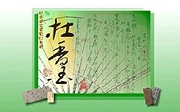|
The Taiwan Shinminpo run its editorials on the second page of its morning edition every day expect Monday. The designated column was titled「社說」(“Editorials”). Hailed as the soul of the newspaper, the editorials represent the basic stance of the newspaper, expressing its views and suggestions on peoples and events and reflecting its aspirations and expectations of the country and society. While news is fait accompli that should be reported objectively with no change or deviations from the fact, editorials are opinions based on the facts reported in the news, which can vary when viewed with different perspectives. Hence, being unique, editorials naturally become a distinctive characteristic of a newspaper. From the days of The Taiwan Minpao, the editorials had been an important feature of the newspaper and remained one of the regular and longtime columns of The Taiwan Shinminpo. They had been published continuously from 1923 till end of February 1944, a month before the publication ceased. The exclusive collection of our Institute contained more than 2,200 editorials published throughout the two decades. The contents echoed current affairs and expressed appeals. The issues discussed were mainly related to politics and the economy, but also concerned education, policies of colonial rule, society, health care and diverse aspects. In 1932, The Taiwan Shinminpo, then a daily, released its second editorial entitled “Self-Government Reform and Compulsory Education”, which stated clearly that the editorials served to arouse public opinion and draw attention of the government and the people particularly to the many prevailing problems in Taiwan that warranted rectification and reformation. When published only weekly, opinions and suggestions though many were left unsaid; now with daily publication, more could be expressed in the hope that feelings and wishes of the common people could reach the higher authorities. That editorial also expressed the demands of the Taiwanese people and called on the Japanese government to expand civil rights and freedom, bring about local autonomy and make compulsory education universal. (Figure 7) However, when Japan was on a wartime footing, the editorials became less critical, with contents expressed mostly from the standpoint of the Government-General of Taiwan. The emphasis shifted to promulgation of government decrees and war propaganda, advocating for cooperation or compliance of the public with national policies.
Figure 7 The daily editorial appeared mostly at the top of the second page and only on a few occasions at the upper left of the first page. Usually the discussion expressed in sections focused usually on one topic and occasionally on two issues. This editorial (with partial contents shown) published on April 18, 1932 talked about the meaning and significance of the editorial column as well as the urgency of promoting local autonomy and compulsory education in Taiwan. Source: The Taiwan Shinminpo No. 413, Yang Zhao-jia Collection (LJK) (LJK_09_10_0031772).
The Taiwan Shinminpo also carried columns for short commentaries on current affairs. Between 1932 and 1933, the titles of these columns included「冷語」 (“Cold Words”) and「爆彈」 (“Bombshell”); and their contents were candid and audacious. There were also columns featuring comments on international events titled「小評」 (“Minor Comments”), 「小言」 (“Trivial Thoughts”), and 「芻言」 (“Humble Opinions”). Later, from 1938 till September 1942, the newspaper run a regular column for commentaries called 「ときの声」(“Voice of Time”). The plethora of contents included China’s economy (1938/3/18), Taiwan's attire customs (1938/3/18), government measures against rising prices (1939/6/16), and the Japanese-Soviet Armistice Agreement (1939/9/17). However, after 1941, most of the contents were to promote the legitimacy of Japanese waging war overseas, emphasizing the brilliant achievements of the military and the unity at the home front. The arguments became weak and the comments published were mostly about the war abroad, with the exception of important domestic events, such as the earthquake that occurred in Zhongpu, Chiayi in 1941. Comments published on the day following the quake attributed the high casualties to the cheap and poor construction materials used on the island. Suggestions put forward included regulations on building construction to be introduced by the authorities and subsidies to be provided for restoration of collapsed houses and renovation of existing ones for disaster prevention. (Figure 8)
Figure 8 On December 19, 1941, the commentary pointed out that architectures in Taiwan were not earthquake-resistant and called on the government to regulate construction materials or provide reconstruction subsidies. These suggestions were made in the light of the earthquake that happened in Zhongpu, Chiayi two days ago. The same page also carried follow-up reports on this earthquake of magnitude 7.1 on the Richter scale, which caused 360 deaths and around 730 injuries, 4,481 houses collapsed and 6,787 houses damaged in Tainan Prefecture (approximately today's Yunlin, Chiayi, and Tainan). Source: Kounan Shinbun (Kounan News) No. 3918 (1941-12-19), Records of the Taiwan Shinminpo (T1119_03_011_0019). |
 |





